13 Tips to Extend the Vase Life of Your Cut Flowers
Do you struggle to keep your flowers alive for more than a couple of days? Today I’m sharing 13 tips and tricks to help extend the vase life of your cut flowers.
There’s nothing more frustrating than wilting flowers soon after you’ve cut them from the garden. The tips below will help keep your flower arrangements fabulous. And the best part is that they are simple tricks.
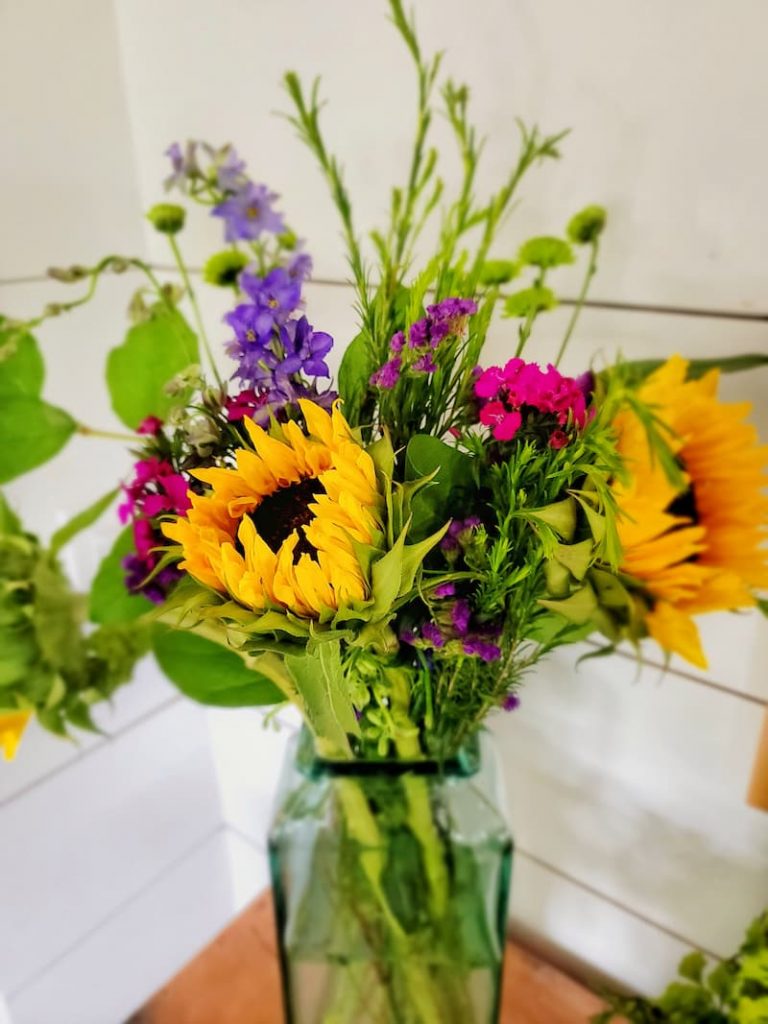
As an Amazon affiliate, I earn a commission from qualifying purchases at no additional cost to you. My blog also features other affiliate links for your convenience. Click here to read my privacy policy.
How Long Do Cut Flowers Stay Fresh?
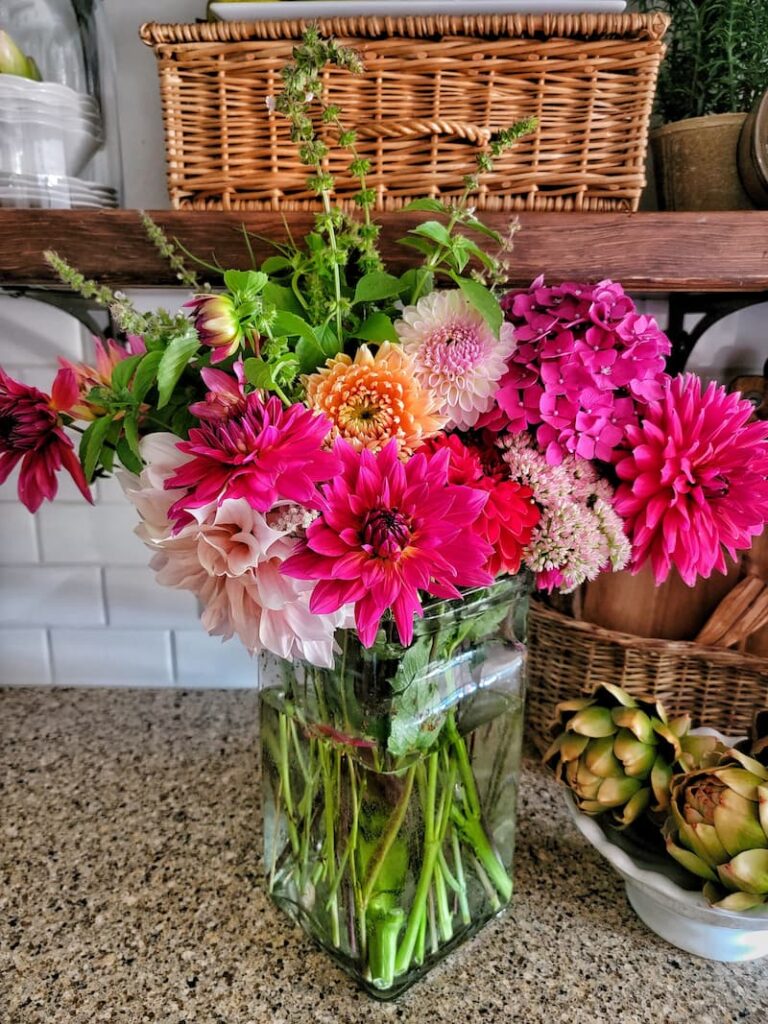
The freshness of cut flowers can vary depending on several factors.
The type of flower, the care they receive, and the environment they are placed in all make a difference.
On average, most cut flowers tend to stay fresh for about 5 to 14 days. However, some flowers with a longer vase life can last up to two weeks or more with proper care. Some of these long-lasting flowers are roses, chrysanthemums, and alstroemerias
13 Tips On How to Extend the Life of Cut Flowers
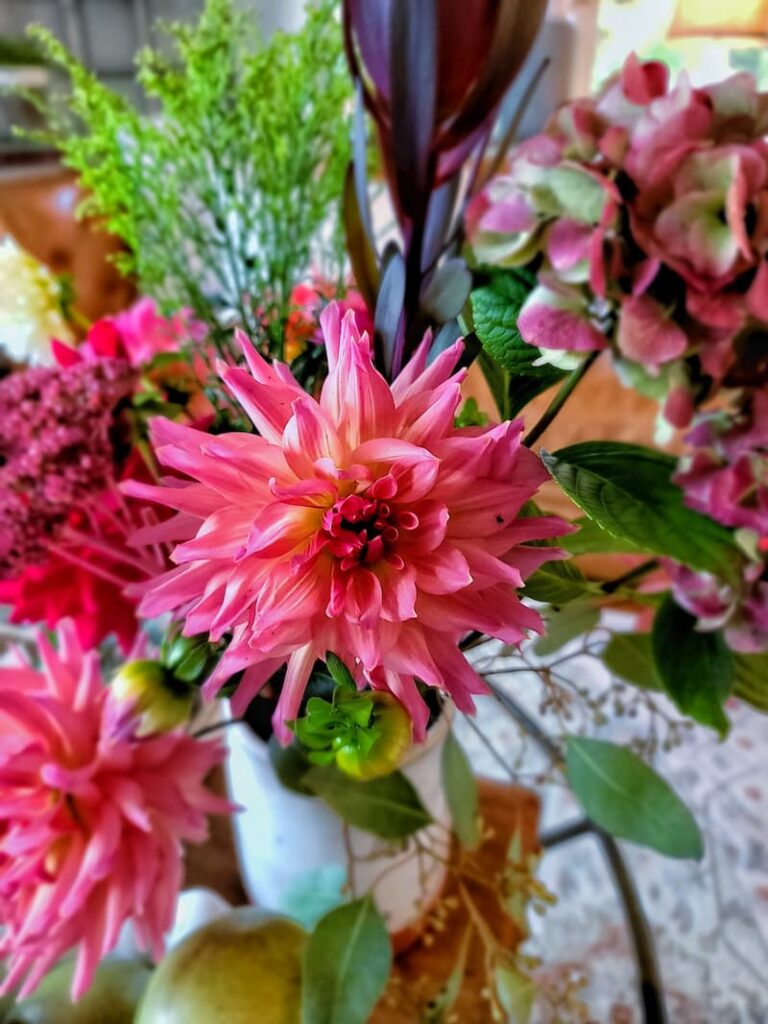
Here are a few tips to get the most out of your fresh-cut flowers every time you harvest them.
1. Use Buckets and Vases that are Clean and Sanitized
Before harvesting, clean and sanitize the buckets and vases you will put your flowers in. This will help keep bacteria from plugging up the flower stems, preventing them from getting water.
After cleaning the buckets you’ll be using for harvesting, fill them will cool water.
2. Harvest Flowers in the Early Morning
Cutting flowers in the early morning, when it’s cooler, will extend your flower’s vase life. This is because they’ve had a chance to rehydrate.
Always avoid harvesting in the heat of the day when your plants are more stressed.
3. Harvest at the Right Time in the Growing Cycle
Harvesting cut flowers at the right time in their growing cycle is a crucial step in ensuring their extended life and freshness once they’re placed in a vase. Here’s why timing matters:
4. Cut Your Flowers Properly and Add to Water Immediately

Always use sharp and clean garden pruners or shears to cut flower stems to avoid spreading bacteria. Dull scissors or clippers can damage the flowers, making it harder for them to keep hydrated.
When harvesting your flowers from the garden, make 45-degree angle cuts above a node to promote new blooms.
If your flowers are store-bought, trim the stems an inch or two at an angle. This allows for better water uptake. They aren’t sitting flat on the bottom of the vase and have a bigger surface area.
Put the flower stems into your clean bucket filled with cold or room-temperature water immediately after cutting them.
The flower stems may have air bubbles which can prevent water from being absorbed easily. Cold water between 35-50°F can help shock them and disband the air pockets better.
Bulbs such as daffodils, tulips, and lilies are the exception and prefer cold water.
All foliage and extra leaves below the waterline should be stripped off the stem. This will not only help the harvested flower focus its energy on the main blooms, but it will also help prevent bacterial growth in the vessel.
By removing the extra foliage, the water will stay cleaner and help eliminate odors.
Gardening Tips
Roses have guard petals that can be removed to allow your flowers to open up fully. These are the outermost 2 or 3 petals of the flower.
Putting a penny in a vase helps keep tulips from drooping.
6. Let Cut Flowers Rest
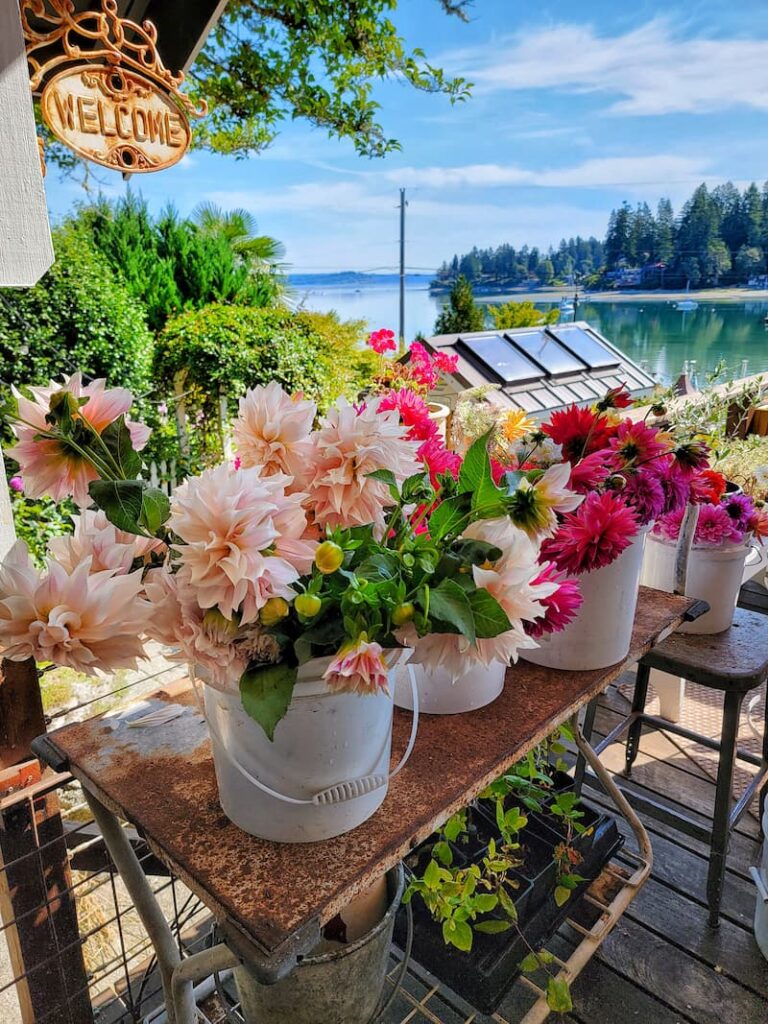
Fill a bucket or two with beautiful fresh flowers. Bring them to a cool, dark space inside to start rehydrating for a few hours before arranging them in a vase.
7. Add Flower Food to Keep Cut Flowers Fresh
Flower food, which helps extend a cut flower’s vase life, consists of the following ingredients: citric acid, bleach, and sugar.
If you buy fresh-cut flowers from a florist or store, they’ll usually give you a packet of flower food. But you can also make your own.
8. Change Out the Water Regularly
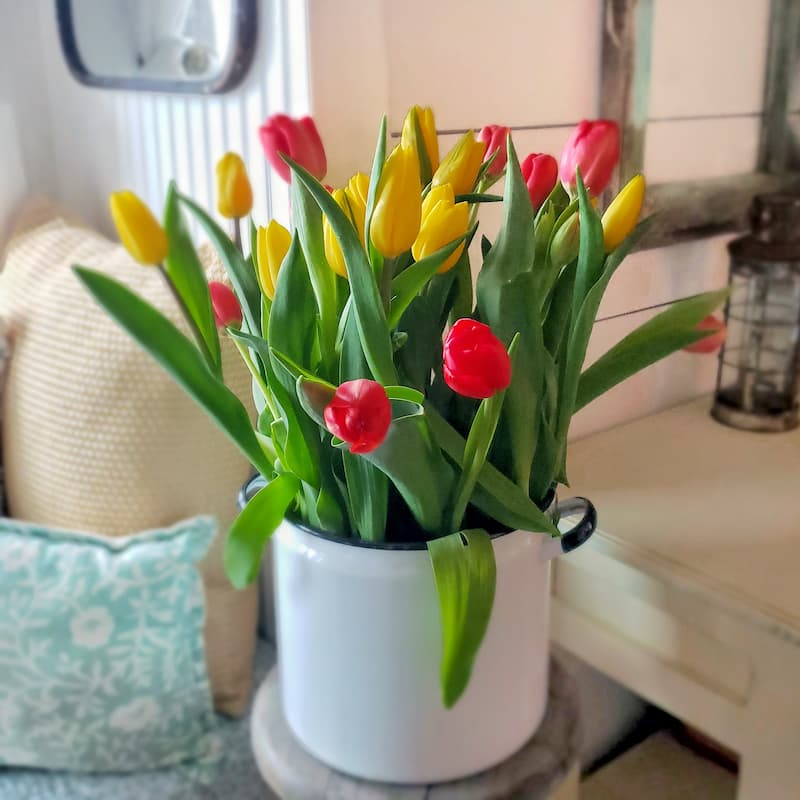
Rinse and clean the vase or flower container with warm water every 2-3 days to extend the life of your flowers.
Trim the stems at an angle once again.
Fill the clean vase about 2/3 full of cold, fresh water and add more flower food.
9. Re-cut Flower Stems Every 2-3 Days
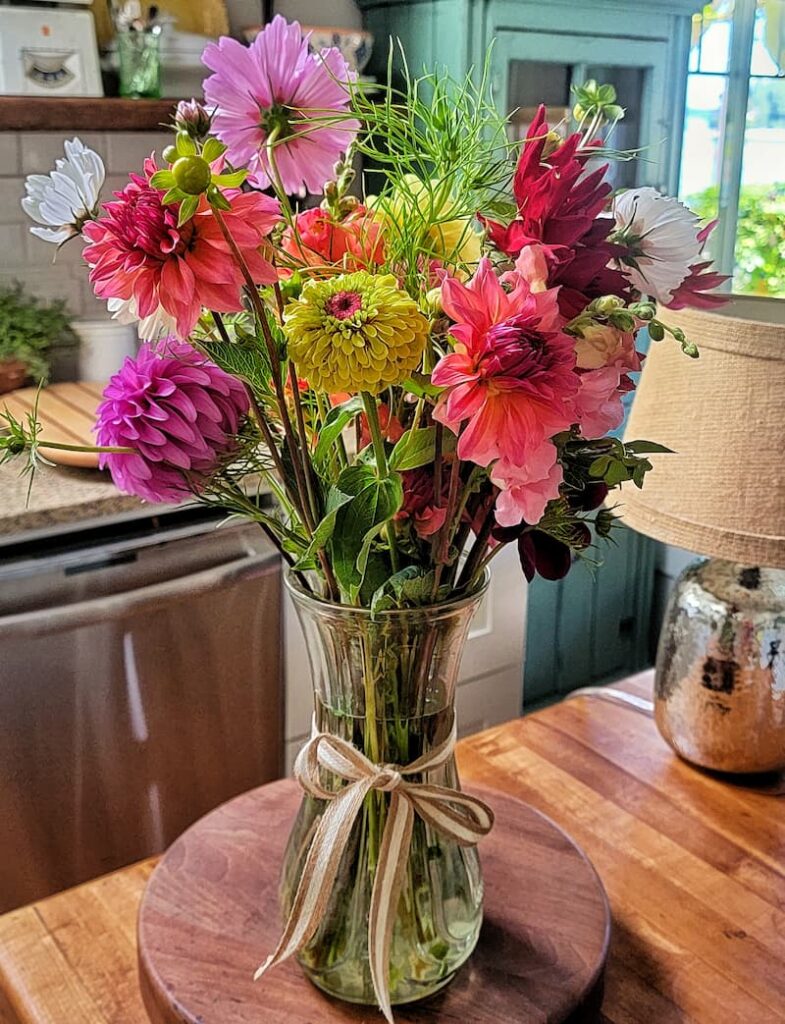
Re-cutting flower stems every couple of days after they’ve been placed in a vase is a simple yet effective technique that can significantly extend the freshness and life of your cut flowers.
Here’s why re-cutting is beneficial:
10. Place Your Flower Bouquet In a Good Location
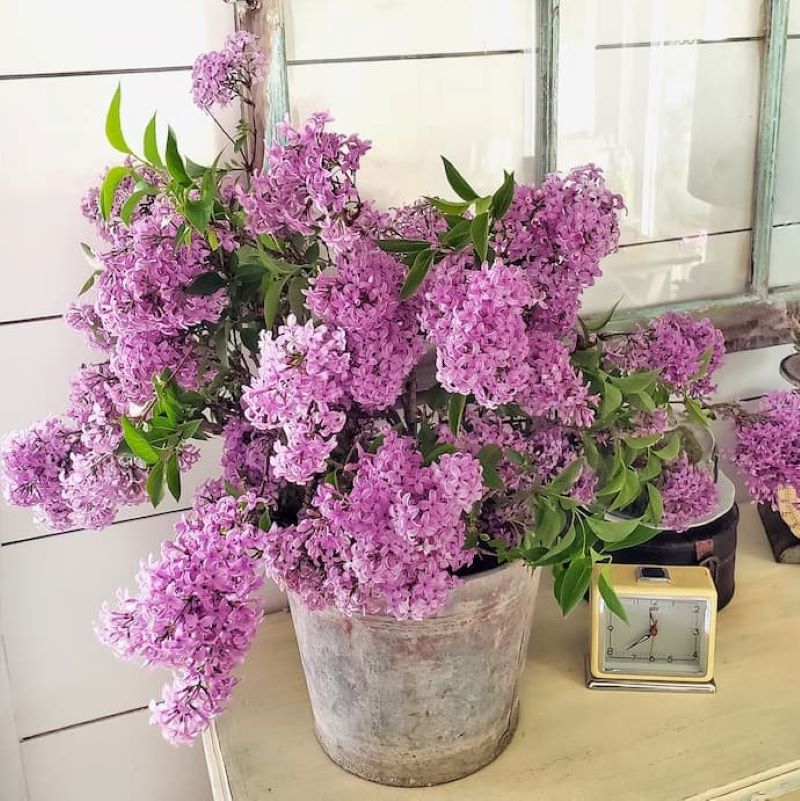
You can extend the life of your flower arrangement by finding the perfect location in the house for them.
Select Cool and Shady Locations
Cool temperatures and indirect sunlight will keep your flowers fresher and longer.
Avoid spaces such as heating and cooling vents, fans, and appliances that generate heat. Sitting flowers next to open windows can cause dehydration as well.
Keep Flowers Away from Fruits and Vegetables
Ripening fruits and vegetables gives off ethylene gas which will cause flowers to wilt.
Tip
Do not store your cut flowers in a fridge with fruits and vegetables. They release toxins that will cause your flowers to wilt.
11. Keep Cut Flowers Fresh in the Fridge Overnight
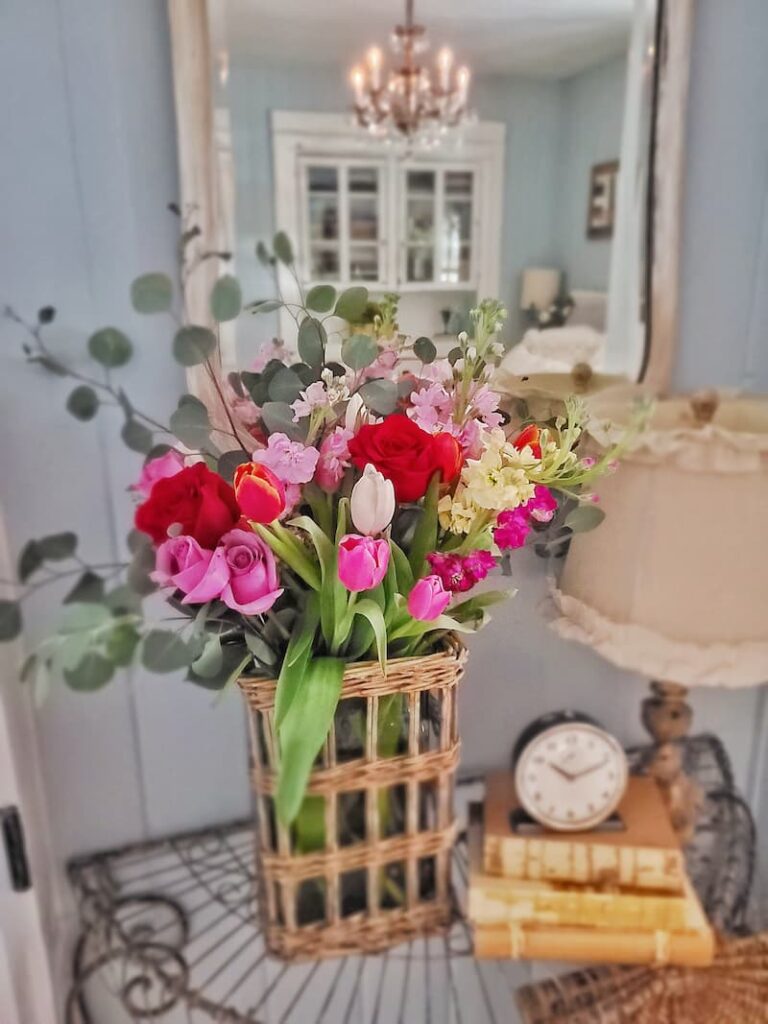
Keeping cut flowers in the fridge overnight can be a helpful technique to extend their freshness. The cool and controlled environment slows down the aging process and reduces water loss.
However, it’s important to note that not all flowers respond well to refrigeration. Some flowers are sensitive to cold temperatures and can be damaged by chilling. Some types of flowers might produce condensation when taken out of the fridge, potentially causing water damage to delicate petals.
12. An Extra Tip for Wilting Hydrangeas and Lilacs
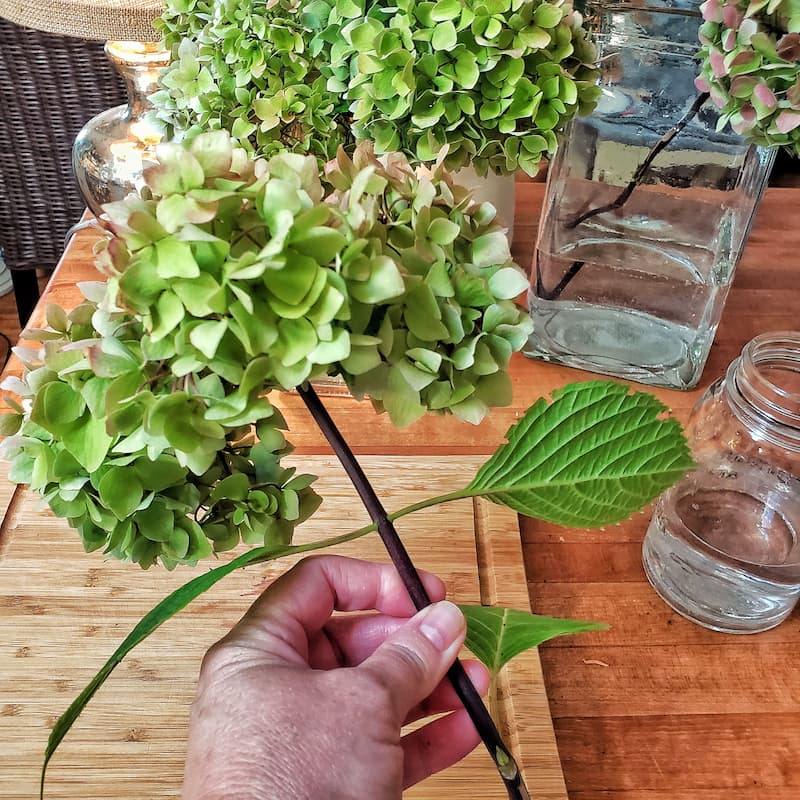
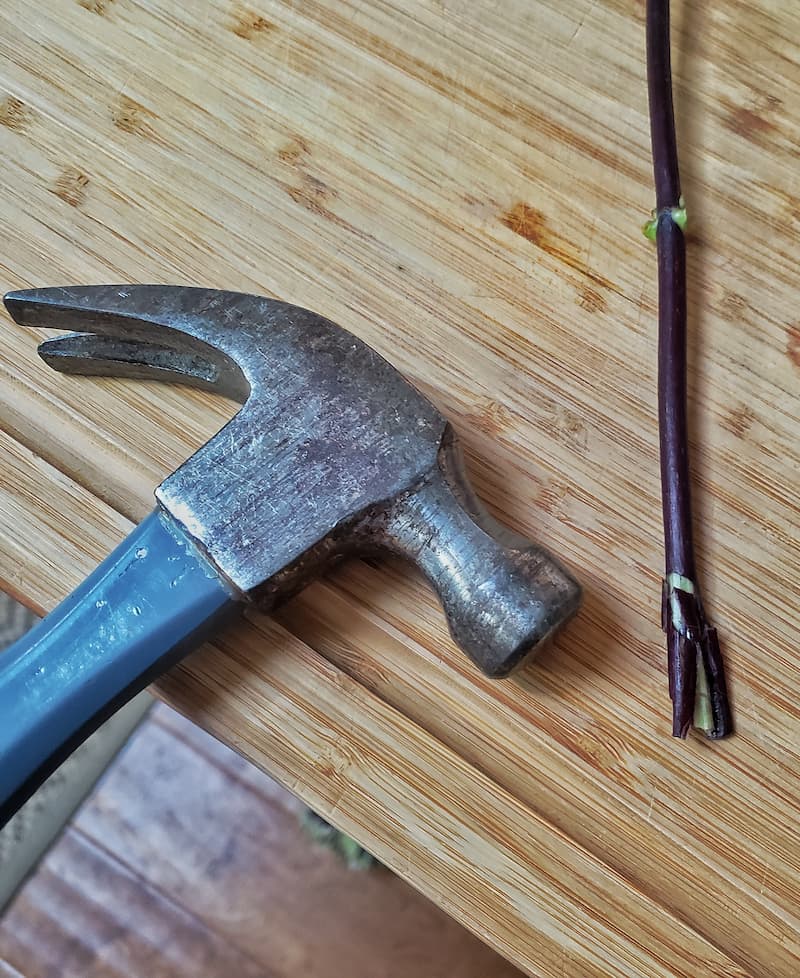
When it comes to keeping my harvested hydrangeas and lilacs from wilting excessively, I add an extra step after cutting the stems.
Like any other flower, I cut the stem at an angle to allow more water to be soaked.
I smash the bottom of the stem with a hammer to allow even more water to be soaked into the bloom.
13. Do Not Mix Certain Flowers With Others in a Vase with Water
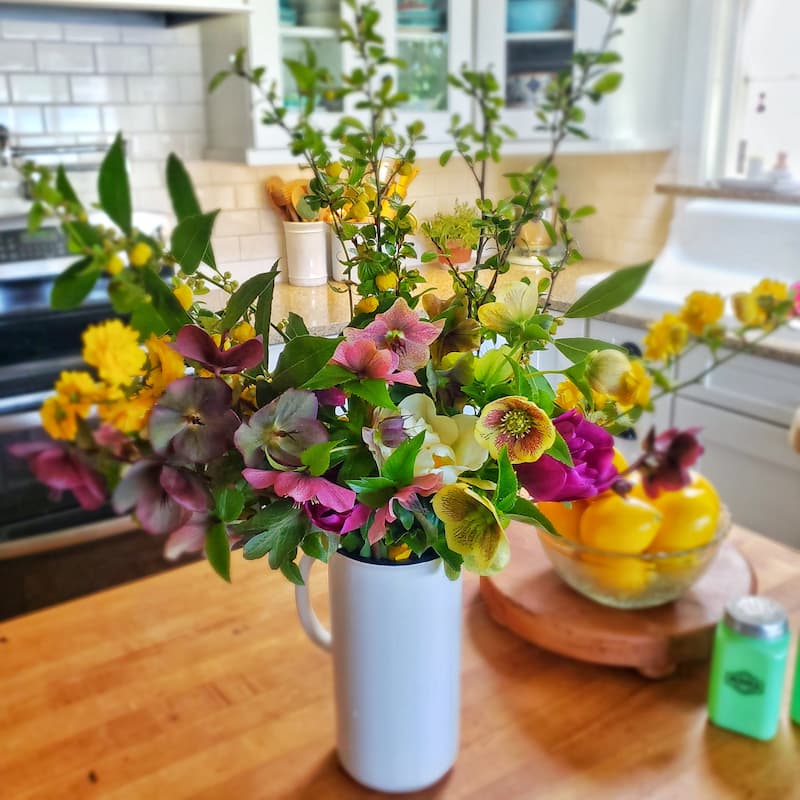
When arranging cut flowers in a vase, consider which flowers should not be mixed due to potential negative interactions. Some flowers release substances that can shorten the vase life of others or cause them to wilt prematurely. Here are a few examples of flowers that should not be mixed with certain other flowers:
Common Questions About Extending the Life of Cut Flowers
What Can I Add to Flower Water to Extend the Life of Cut Flowers in a Vase?
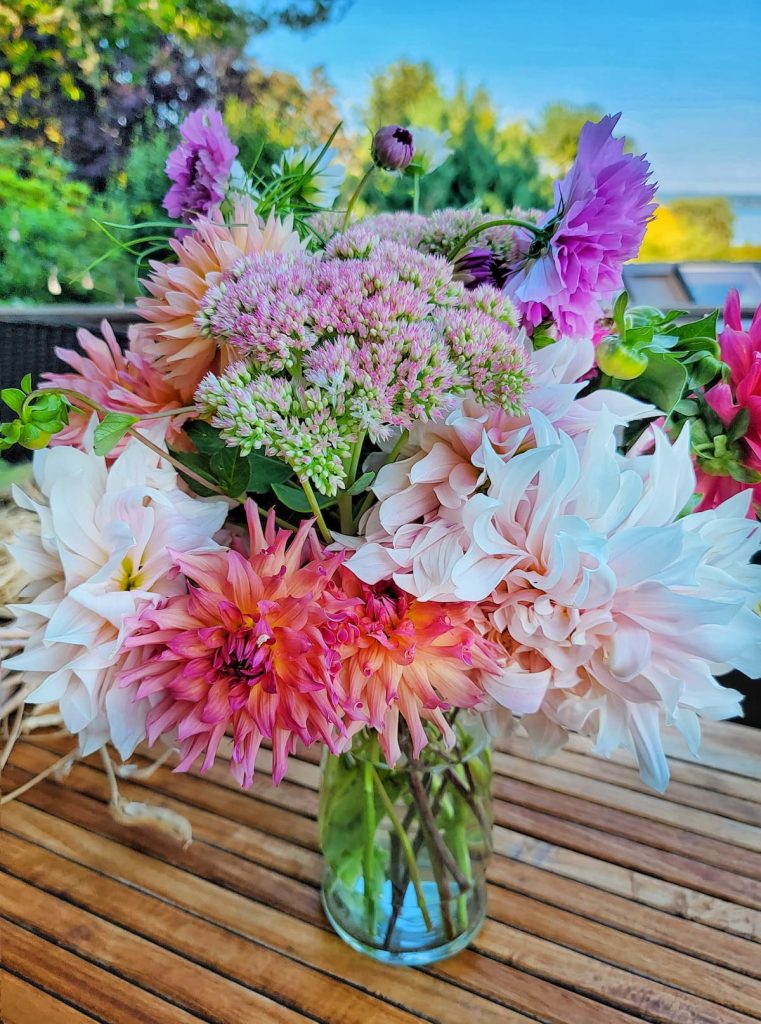
There are several additives you can add to flower water to help extend the life of cut flowers in a vase. These additives can provide essential nutrients, reduce bacterial growth, and maintain the freshness of the blooms. Here are a few options:
Flower Food
Flower food packets are often provided when you purchase flowers from a florist. These packets contain a mixture of nutrients, a biocide to prevent bacterial growth, and an acidifier to help water uptake. Follow the instructions on the packet for the correct dosage.
Aspirin or Disprin
Crushed aspirin tablets can slightly lower the pH of the water. This will make it easier for flowers to take up water. Dissolve one crushed aspirin tablet in the vase water before adding the flowers.
Sugar
A small amount of sugar can provide a source of energy for the flowers. Use about 1-2 tablespoons of sugar per quart of water to help them bloom.
Apple Cider Vinegar
A teaspoon of apple cider vinegar can help prevent bacterial growth and keep the water clean. It also slightly acidifies the water, aiding in water uptake.
Bleach
A few drops of bleach can help prevent the growth of bacteria in the vase water. Use very small amounts, about 1/4 teaspoon per quart of water, to avoid damaging the flowers.
Vodka or Clear Liquor
A small amount of clear liquor can help inhibit bacterial growth in the water. Use about 1-2 tablespoons per quart of water.
Coins or Copper Pennies
There’s a belief that adding a copper coin to the water helps prevent the growth of bacteria. Copper is thought to act as a natural fungicide.
Clean Water
Changing the water every 2-3 days and giving the stems a fresh cut will extend the life of cut flowers. Using clean water and ensuring there are no submerged leaves or debris can greatly reduce bacterial growth.
Does Sugar Prolong the Life of Cut Flowers?
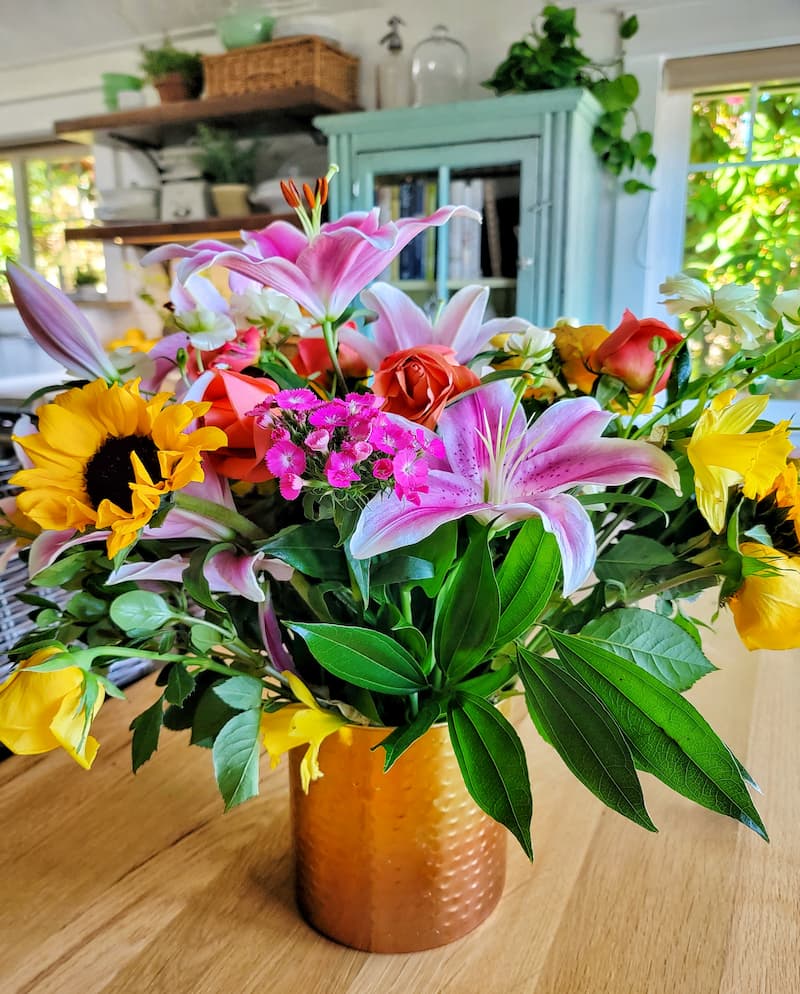
Yes, sugar can help prolong the life of cut flowers to some extent. Adding a small amount of sugar to the water in a vase can provide a source of energy for the flowers. They can use this to open up and continue blooming. Here’s how it works:
Energy Source
Flowers need energy to continue their natural processes, including opening up their buds and maintaining their vibrant appearance. Sugar, in the form of sucrose, provides a readily available source of energy that the flowers can absorb through their stems.
Extended Blooming
By supplying the flowers with additional energy, you can help them stay fresher for a longer period. This can result in more open blooms, more vibrant colors, and an extended overall vase life.
Dosage
Typically, adding about 1-2 tablespoons of sugar per quart of water in the vase is sufficient. Too much sugar can promote bacterial growth and might not provide any additional benefits to the flowers.
Does Baking Soda Make Cut Flowers Last Longer?
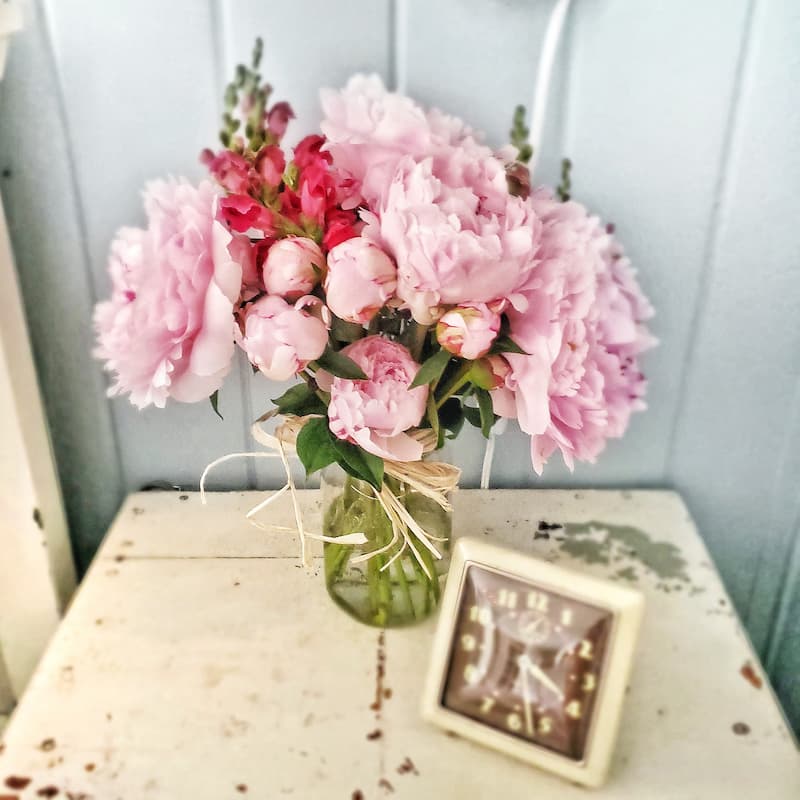
Baking soda is not typically used to prolong the life of cut flowers. Unlike some other additives, baking soda doesn’t offer significant benefits for the longevity of cut flowers in a vase. Baking soda is commonly used in cooking and cleaning due to its alkaline properties, but its effects on cut flowers are limited.
Does White Vinegar Help Keep Cut Flowers Fresh?
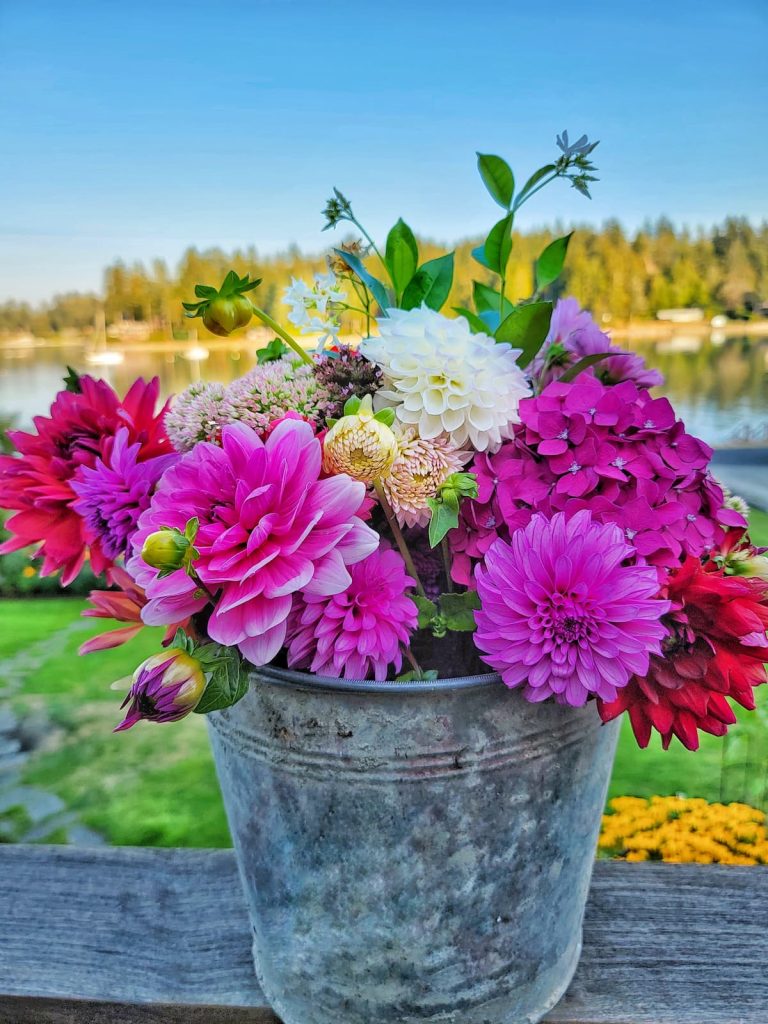
Yes, white vinegar can be used to help keep cut flowers fresh in a vase. Adding a small amount of white vinegar to the vase water can create a slightly acidic environment that discourages the growth of harmful bacteria and fungi. Here’s how white vinegar can help.
Bacterial Growth Prevention
White vinegar has antimicrobial properties that can help prevent the growth of bacteria in the vase water. Bacteria in the water can clog the stems of the flowers and lead to premature wilting and decay.
Acidic Environment
Many cut flowers prefer a slightly acidic environment for optimal water uptake. White vinegar can lower the pH of the water slightly, making it easier for the flowers to absorb water and nutrients through their stems.
Dosage
A common recommendation is to add 1-2 tablespoons of white vinegar per quart (about 1 liter) of vase water. This amount is generally safe and effective in preventing bacterial growth without harming the flowers.
Caution
While white vinegar can be beneficial, it’s essential to avoid using too much, as excessive acidity could harm the flowers.
Also, some flowers are more sensitive to changes in pH than others, so it’s a good idea to research the specific flowers you’re working with to ensure they will benefit from the addition of vinegar.
Does Hairspray Help Keep Cut Flowers Fresh?
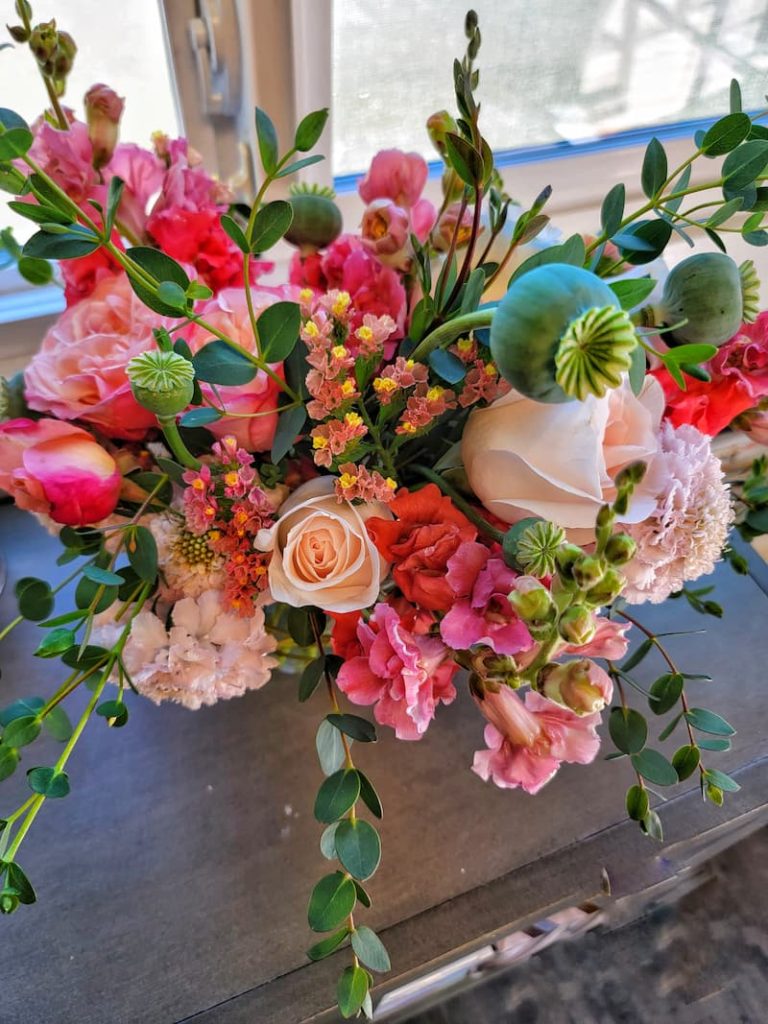
Hairspray is not recommended as a method to keep cut flowers fresh in a vase. While some people believe that hairspray can help preserve the appearance of flowers, there are potential drawbacks and more effective alternatives to consider.
Drawbacks of Using Hairspray:
- Toxicity: Hairspray contains various chemicals that are not meant for use on plants. Applying hairspray to cut flowers can introduce these chemicals into the water, which can be harmful to the flowers and might even be absorbed through their stems.
- Clogging: Hairspray can clog the pores (stomata) of the flower petals, inhibiting their natural processes and potentially causing them to wilt prematurely.
- Limited Benefits: While hairspray might offer a temporary fix to help flowers retain their shape, it doesn’t address the fundamental needs of the flowers, such as water and nutrients.
Final Thoughts On Extending Your Vase Life
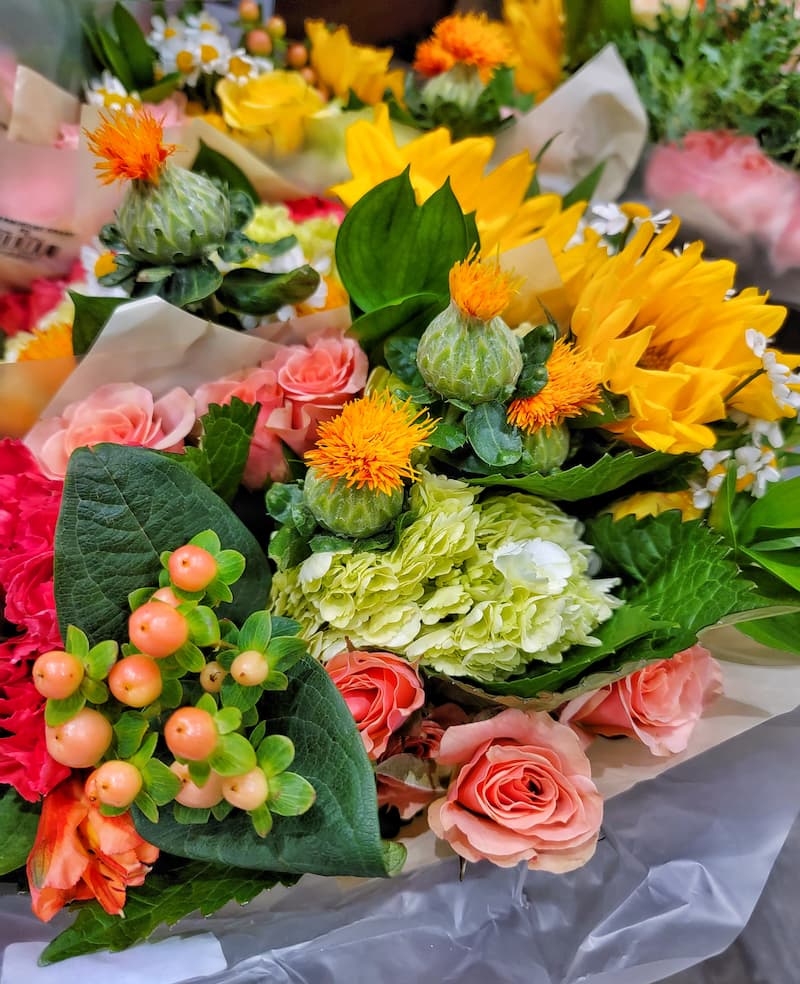
To extend the vase life of your cut flowers, it’s important to follow simple steps like choosing fresh flowers, using clean vases and water, cutting the stems at an angle, removing any leaves that will be submerged in water, and placing the flowers in a cool and well-ventilated area.
Keep the blooms away from direct sunlight, heat sources, and fruit bowls (which release ethylene gas that can accelerate wilting).
Regularly changing the water, providing flower food, and re-trimming stems every few days can also prolong the freshness of your cut flowers.
It really is easy to keep your flowers from looking fresh and fabulous even longer.
If you have any questions or additional suggestions, feel free to share them in the comments below. And be sure to share this blog post link with anyone who may find these tips useful.
Until next time,
Happy Cut Flower Arranging!

MORE POSTS
For You To Enjoy
Follow Me for More Inspiration
Shop my Amazon Storefront, LTK sources, and my favorite home decor, garden, and lifestyle products. When you purchase from one of my links, I earn a small commission, which helps me continue sharing all the content you expect on my blog.
Be sure to follow me on Pinterest, Instagram, Facebook, TikTok and LIKEtoKNOW.it. Do you like gardening? Join my Facebook Gardening Tips & Tricks group.





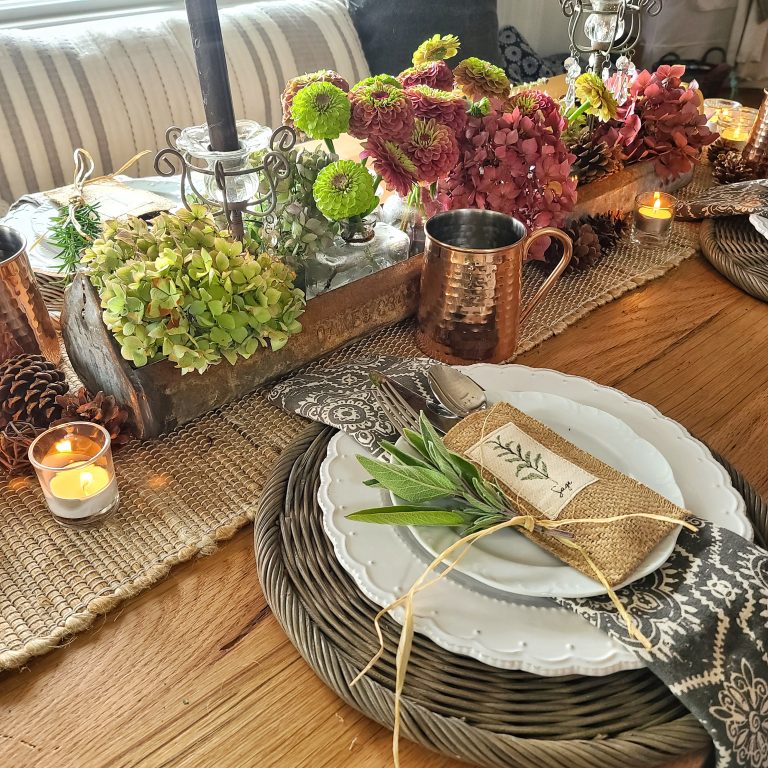


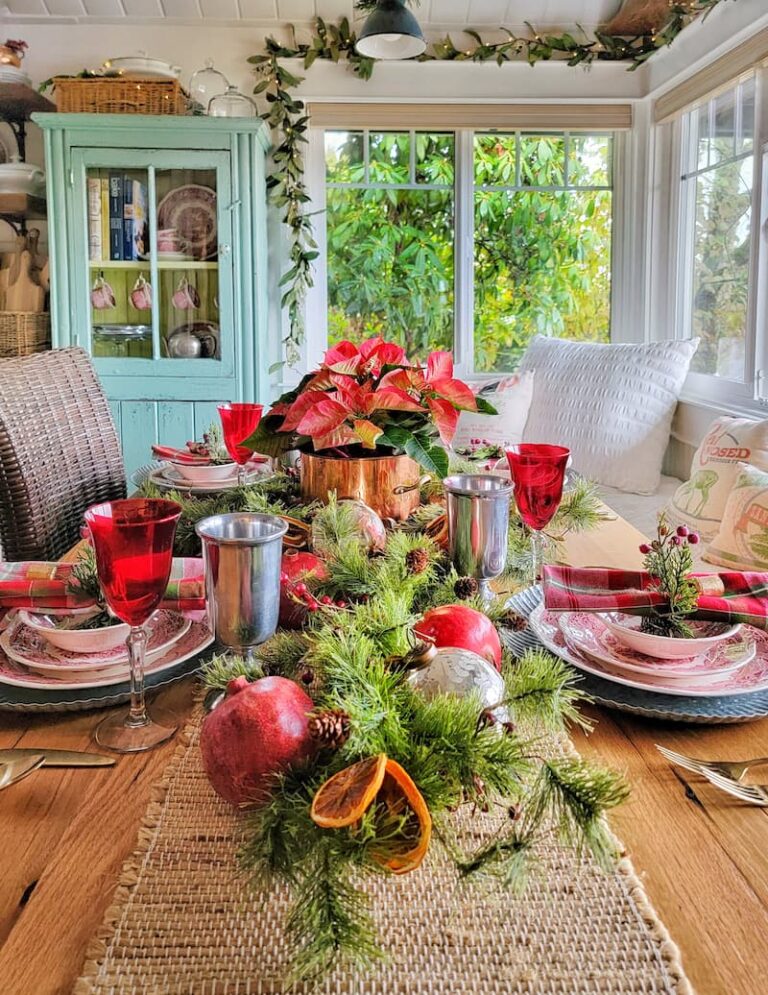
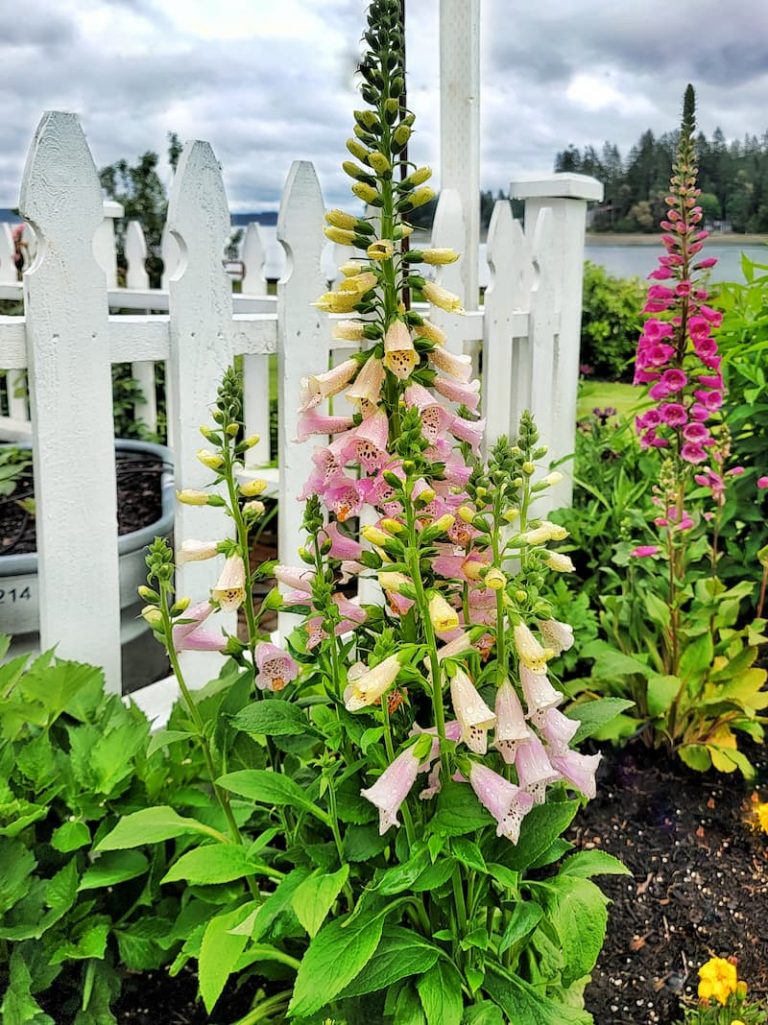
I have the worst time keeping my cut flowers fresh. In fact, sometimes I just don’t think it is even worth getting flowers since they quickly look terrible. I will definitely give some of these tips a try!
I had NO IDEA you could make your own flower food, Kim, that is so cool! I bring home flowers from the grocery store that look so good until I get them home and then I struggle to keep them fresh. It’s super frustrating! I had almost given up on being able to have pretty flowers until this post. Now I’m excited to try it again! Big hugs and thanks so much for always sharing your best, CoCo
You will have to let me know what you think after you make some flower food of your own CoCo.
OH I really needed this one. Thank you so much for a helpful and important post friend.
I’m so glad this post helped Chas!
This is so great and all your arrangements are gorgeous! I’m sharing with my followers in my weekend round up, “From My Neck of the Woods.” They will love it!
Thank you so much for sharing on your blog Kristin!
Great tips Kim. I can’t wait to try a few of these??
I’m so glad Ann. Let me know how they work for you.
Kim,
I’m loving these tips and have pinned for future reference!
I’m so glad Rachel. Thank you!
Thank you for all of your great tips Kim!
I’m so glad you liked them, Stacy! However, I know you don’t really need many. You are an expert!
These are such great tips, Kim. Thank you for sharing. I’m definitely going to be trying some of these. I’m also going to share a link to all of your tips with my readers tomorrow in my week in rewind post. I Hope you have a great weekend!
I really appreciate you sharing on your blog Jen. Thank you!